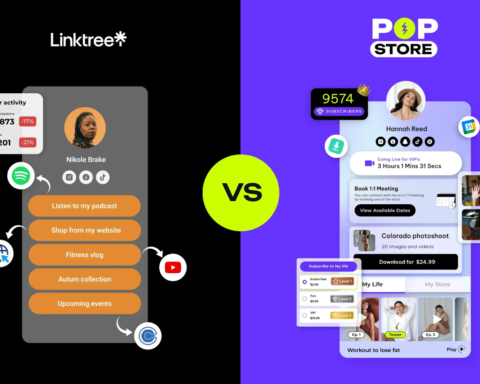When someone you love is caught in a cycle of destructive behavior, it’s natural to feel a mix of emotions—frustration, fear, and even helplessness. While you can’t force someone to change, an intervention can be a powerful tool to guide them toward the help they need. It’s important to understand how to have an intervention that strikes a balance between effectiveness and compassion.
This guide will break down the process into clear, manageable steps, giving you the confidence to approach this delicate situation with care and purpose.
Having an intervention can be a pivotal moment in helping someone you care about make positive changes in their life. Whether it’s addressing substance abuse, mental health struggles, or harmful behaviors, interventions provide a structured approach to express concern and offer support. This step-by-step guide will walk you through how to have an intervention, from planning to follow-up, ensuring that you’re equipped to handle the process with empathy and clarity.
Step 1: Recognize the Need for an Intervention
The first step in understanding how to have an intervention is recognizing when it’s necessary. If your loved one’s behavior is putting their health, relationships, or future at risk, and if previous attempts to address the issue have failed, it might be time to consider an intervention.
Common signs that an intervention may be needed include:
Escalating substance use or addiction
Persistent mental health issues that are not being addressed
Destructive behaviors that are impacting others
Denial or resistance to acknowledging the problem
Acknowledging the need for intervention is the first step toward creating a positive change.
Step 2: Educate Yourself on the Intervention Process
Before diving into the logistics, take the time to educate yourself on what an intervention involves. Understanding the purpose and structure of an intervention will make you more confident in the process and help you communicate effectively with others involved.
An intervention is a carefully planned event where family, friends, and sometimes coworkers come together to confront the individual about their behavior. The goal is to express concern, set boundaries, and present a clear plan for seeking help.
Step 3: Decide on the Type of Intervention
There are different types of interventions, and choosing the right one for your situation is crucial. Here are some common types:
Simple Intervention: This is a one-on-one conversation with the person to discuss their behavior and suggest help.
Classic Intervention: This involves a group of people, usually led by a professional, confronting the individual in a structured setting.
Crisis Intervention: This is used when immediate action is needed, such as in cases of severe substance abuse or dangerous behavior.
Your choice will depend on the severity of the situation and the dynamics of your relationship with the individual.
Step 4: Assemble Your Intervention Team
An effective intervention involves the right people. Assemble a team of individuals who care about the person and have a positive influence on their life. This might include family members, close friends, or coworkers.
When selecting your team, consider the following:
Choose people who can communicate with empathy and without judgment.
Avoid individuals who may escalate the situation or who have unresolved issues with the person.
If you’re working with a professional interventionist, they will guide the selection process.
Keep the group small and focused, as too many voices can overwhelm the individual and dilute the message.
Step 5: Plan the Intervention
Planning is a critical part of how to have an intervention. The more prepared you are, the smoother the process will go. Here’s what you’ll need to do:
Choose a Time and Place: Select a neutral, private location where everyone will feel comfortable. Avoid times when the person may be under the influence or particularly stressed.
Prepare Your Statements: Each team member should write a statement expressing their concern for the individual. Focus on specific examples of how their behavior has impacted you and others, and emphasize your support for their recovery.
Develop a Treatment Plan: One of the most important aspects of the intervention is presenting a clear path to treatment. Research options, such as rehab programs, therapy, or support groups, and have them ready to offer during the intervention.
Anticipate Reactions: Be prepared for a range of emotions—anger, denial, sadness, or even relief. Plan how you’ll respond and keep the conversation focused on the goal of seeking help.
Step 6: Conduct the Intervention
The day of the intervention can be nerve-wracking, but remember that you’re doing this out of love and concern. Here’s how to navigate the actual event:
Start with Positivity: Begin by expressing your love and care for the person. This sets a supportive tone and helps prevent the conversation from feeling like an attack.
Take Turns Speaking: Each participant should share their prepared statements, focusing on personal experiences and the impact of the person’s behavior. Speak calmly and avoid accusations or blame.
Stay Focused: It’s easy for emotions to run high during an intervention, but staying on track is crucial. Stick to the script and keep the conversation focused on the goal of seeking help.
Present the Plan: After everyone has spoken, present the treatment plan. Be clear about the steps you want the person to take and explain the support you’re offering to help them through the process.
Set Boundaries: If the person refuses help, it may be necessary to set boundaries or consequences. This could mean withdrawing financial support, limiting contact, or other measures that reinforce the seriousness of the situation.
Step 7: Follow Up
The intervention doesn’t end once the conversation is over. Follow-up is a critical part of how to have an intervention effectively. Here’s what to do next:
Provide Ongoing Support: Whether your loved one accepts help or not, continue to offer emotional support. Stay in touch, check in regularly, and remind them that you’re there for them.
Enforce Boundaries: If you set boundaries during the intervention, it’s important to stick to them. This shows that you’re serious about the need for change and helps prevent enabling harmful behavior.
Celebrate Progress: If your loved one starts making positive changes, celebrate their progress. Recognizing their efforts can be incredibly motivating and help them stay on the path to recovery.
Seek Professional Help: If the intervention didn’t go as planned or if you’re struggling with the aftermath, consider seeking professional help for yourself and other participants. Counseling or support groups can provide guidance and coping strategies.
FAQs About How to Have an Intervention
Q: What if the person reacts negatively to the intervention?
A: Negative reactions are common, but it’s important to stay calm and focused. Allow the person to express their emotions, but gently guide the conversation back to the purpose of the intervention.
Q: Should I involve a professional interventionist?
A: While not always necessary, a professional interventionist can provide valuable guidance, especially in complex or emotionally charged situations.
Q: How long should the intervention last?
A: Interventions typically last between 30 minutes to an hour. The goal is to keep the conversation focused and productive without overwhelming the person.
Q: What if the person refuses help?
A: If the person refuses help, reinforce the boundaries and consequences discussed during the intervention. Continue to offer support and encourage them to seek help in the future.
Q: Can an intervention work without a professional?
A: Yes, many successful interventions have been conducted by family and friends alone. However, a professional can add structure and expertise to the process.
Q: Is follow-up necessary after the intervention?
A: Absolutely. Follow-up is crucial to maintaining support, enforcing boundaries, and celebrating progress. It helps ensure that the person stays on the path to recovery.
Knowing how to have an intervention can make a significant difference in the life of someone you care about. By following these steps, you can approach the process with confidence and compassion, helping your loved one take the first steps toward a healthier, happier future. Remember, an intervention isn’t about forcing someone to change—it’s about showing them that change is possible and that they don’t have to face it alone.
Stay in touch to get more news & updates on Essentialtribun.!








